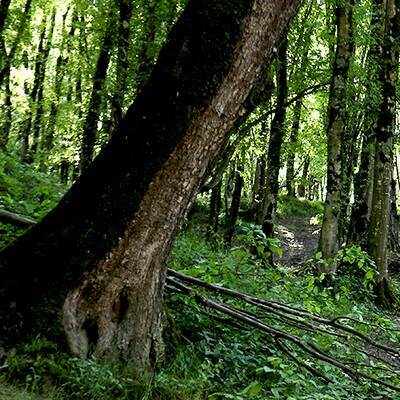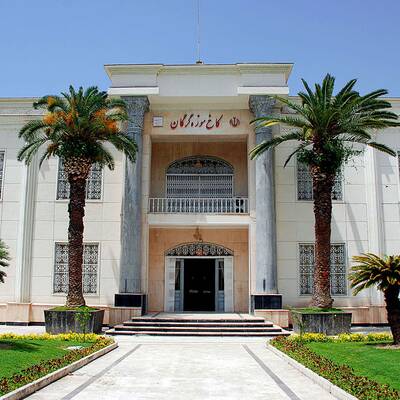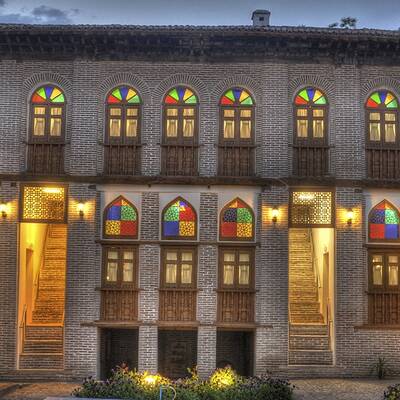The Golestan province has both pristine and beautiful nature like the Golestan forests, as well as historic cities such as Gonbad and Gorgan. Gorgan, the capital of the province, is an ancient city. Excavations at the Torang Teppe indicate that the city dates back to about 6,000 BC. Also, the discovery of the remains of the "Wall of Gorgan", which researchers have compared to the Chinese wall, proves that the city is old.
Jame Mosque of Gorgan is located in the old neighborhood near the Nalabandan market in Pai Sarv - one of the central and historic districts of the city.
Buildings in Gorgan are destroyed more rapidly than other cities due to temperate and humid climates. So, there found fewer historical monuments and structures in the northern provinces than in arid and desert regions. The Gorgan Mosque is no exception. Its first construction dates back to the Seljuq dynasty, but it was damaged by years and centuries of humid weather, and finally, it was restored. There remains just one minaret from the Seljuq era and the rest of the mosque either goes back to the time of the Kara Koyunlu of the Safavid era or the Timurid.
This mosque is built on an area of two thousand and four hundred twenty square meters. Many years ago, there was a cemetery around this mosque that became a part of the city due to the development of urbanization. Jame Mosque of Gorgan is a mosque with a two-iwans plan. It has a courtyard with an area of seven hundred fifty square meters and four L-shaped prayer halls which have five doors that open to the courtyard. When there is a large congregation of worshipers or attendees, three wide doors in the shabistan open to the conference hall on the ground floor(that is a library), to make the ceremony easier.
One of the iwans, the western one, is more used, perhaps because of its good light. There are also celebrations such as the semi-Sha'ban in this Iwan, in addition, there are minbar (a pulpit in the mosque where the imam stands to deliver sermons or in the Hussainia where the speaker sits and lectures the congregation), the double door and its long-standing frame, steering stones, deeds of endowment, and iron ornaments. Among nineteen stone inscriptions on the inner wall of the west Iwan, the oldest one dates back to the time of the Kara Koyunlu, when Jahan Shah ibn Yusuf (the leader of the Kara Koyunlu Oghuz Turks dynasty in Azerbaijan and Arran who reigned c. 1438 – 1467) was the ruler.
The mosque has a low-rise minaret, which is one of the oldest parts of the mosque and it dates back to the Seljuq period. This cylindrical minaret has a Kufic script and decorations in the style of brickwork belongs to Seljuq-era with a sloping roof at the end and a wooden structure that reflect that the mosque is old. Another ancient part of mosque is a beautiful wooden minbar which is carved by flowers and Prophet's Hadith (Ḥadīth in Islam refers to the record of the words, actions, and the silent approval of the Islamic prophet Muhammad), which dates back to Timurid; it was repaired two times in Safavid and Afsharid dynasty. The other piece is the door and its frame (Mentioned above) that belongs to the Timurid Empire and it is in the western Iwan.
It is not clear that who and when this monument has been constructed. Sahmi Gorgani wrote in his book, the history of Gorgan, that Mohammad ibn Khaled Hanzali Razi was its architect. In Az Astara ta Astar Abad (from Astara to Astar Abad), Dr. Sotoudeh said that it was Gawhar Shad (wife of Shah Rukh the Emperor of the Timurid Empire of Herat) who has ordered to build it. Moqadasi believed that it belongs to Umavid and Iʻtimād al-Salṭanah, in Mer’at al-Boldan (the mirror of cities) attributed this mosque to Sunnis.
In the structure of this monument wooden beams are used to strengthen it, these woods, from oak and yew trees, are highly resistant to humid weather and are native but they are almost extinct due to Indisputable harvest. The mosque was repaired many times after the Seljuqs in Timurid, Safavid, Afsharid dynasty because it was destroyed many times due to different reasons: earthquake in 1225 AH, fire, or high humidity. This building has been registered in the Iranian National Heritage list in 1311 SH.
.jpg)
.jpg)
_0.jpg)


